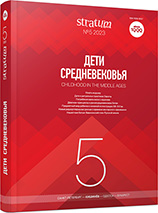Новые радиоуглеродные данные о времени венгерского завоевания. Байесовская модель и возможные генетические связи индивидов из погребений III/11 и II/52 в Карош-Эперьешсёг
New Radiocarbon Data to the Timeline of the Hungarian Conquest. Bayesian model and possible genetic connections of the deceased from Graves III/11 and II/52 in Karos-Eperiesszög
Author(s): Péter Somogyi, Attila TürkSubject(s): History, Archaeology, 6th to 12th Centuries
Published by: Издательский дом Stratum, Университет «Высшая антропологическая школа»
Keywords: Hungarian Conquest period; Karos cemetery; Radiocarbon dating; Bayesian Analyses; OxCal model;
Summary/Abstract: Grave III/11 of Karos-Eperjesszög is an exceptionally lavish assemblage of the 10th-century AD archaeological record of the Carpathian Basin. The grave is of key importance not only for the settlement history of the Upper Tisza Region in the first half of the 10th century AD. Also, with regard to this historical event, one must highlight the scarcity and incompleteness of relevant data in available written sources and the fact that in the past years, about a dozen radiocarbon results became available that point to related activity before the conventional AD 895 date. They may be connected with written sources that mention early Hungarian troops regularly appearing in the Carpathian Basin from as early as AD 862. This paper presents all nine radiocarbon dates from the grave and provides a Bayesian model based on them, the possible chronological connections of the feature with Grave II/52, a burial dated by coins, and a recent hypothesis that the two men were brothers, formulated based on archaeogenetical results. We concluded that the burial is one of the early Hungarian graves established at the end of the 9th century but before AD 895, primarily in the Upper Tisza Region. In the meantime, new developments in the archaeological research in Moldavia and Ukraine allowed a reliable identification of the archaeological evidence left by the direct predecessors of the Hungarian conquest in Eastern Europe in the 9th century. The Subotci horizon matches surprisingly well the important dates indicated by written sources, therefore, these were also reckoned with in our model.
Journal: Stratum plus. Археология и культурная антропология
- Issue Year: 2023
- Issue No: 5
- Page Range: 289-306
- Page Count: 18
- Language: Russian
- Content File-PDF

